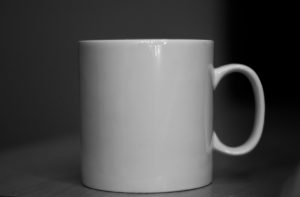Short Term Trading With Cup And Handle Pattern
The Cup And Handle pattern is often used by traders for long term stock trading analysis. However, this pattern is also effective for short term trading strategies that set up over the course of a several weeks instead of years. The pattern also works surprisingly well with other financial markets such as futures, commodities and currencies.
Visual Analysis Of Cup And Handle Pattern
The Cup and Handle pattern is a bullish continuation pattern that begins with a consolidation period followed by a breakout. The pattern was created by William O’Neil and discussed in his book, How to Make Money in Stocks.
As the name suggests, there are two parts to the pattern: the cup and the handle; the cup forms after a strong move and looks like a bowl or rounding formation. After the cup is completely formed, a trading range develops on the right part of the pattern which ends up being the handle and the handle is formed.
A subsequent breakout from the handle’s trading range signals a continuation of the previous price move.

The Pattern Is Simple To Analyze And Produces Quality Breakout Signals
In this example you can see IBM stock going through a typical Cup and Handle Pattern. The volatility of the market you are trading will have a substantial impact on how deep the cup shape gets. The more volatile instruments tend to cause the deepest cup formations. While volatile markets reduce volatility substantially while entering trading range market conditions.

The Depth Of The Cup Varies With Different Markets And Volatility Levels
The most important part of the formation is the Handle. This is the last stage of the consolidation prior to the breakout. Generally speaking Handle patterns should not last more than two weeks for short term trading purposes. This time period is not cut in stone and can be adjusted based on the time frame that took the Cup formation to finish. I have noticed that Handle formations that form in less than 2 weeks seem to produce the best breakouts with the most follow through momentum. When Handle formations last very long time it is a sign that the market may not have sufficient momentum to move forward and break out of the trading range.

The Long Steep Formation Falls Apart Quickly
I pay the most attention to the Handle because this is where the breakout signal occurs. The best type of Handle breakouts begin with strong momentum and build up momentum over a period of several days. You need to keep in mind that the market just went through a relatively long trading range cycle and once the trending cycle starts the trend should fall into place relatively quickly without turning back. Notice the strength and increase of volatility right after the breakout levels are broken in this example.

The Handle Breakout Must Be Strong And Produce Directional Volatility
Things To Keep In Mind
The Cup And Handle is a great trading pattern that works well with different time frames and with most financial markets such as stocks, futures, commodities and foreign currency markets. The cup formation can last anywhere from several months to just a few weeks depending on the time frame you are trading. The Handle is the most important part of the formation and it must last only a few weeks and not hang too low in comparison to the Cup formation. The breakout following the Cup formation must have sufficient momentum and produce noticeable increase in both volume and volatility to make the trade worthwhile.
IMPORTANT NOTICE!
THERE IS SUBSTANTIAL RISK OF LOSS ASSOCIATED WITH TRADING. ONLY RISK CAPITAL SHOULD BE USED TO TRADE. TRADING STOCKS, FUTURES, OPTIONS, FOREX, AND ETFs IS NOT SUITABLE FOR EVERYONE.
DISCLAIMER: STOCKS, FUTURES, OPTIONS, ETFs AND CURRENCY TRADING ALL HAVE LARGE POTENTIAL REWARDS, BUT THEY ALSO HAVE LARGE POTENTIAL RISK. YOU MUST BE AWARE OF THE RISKS AND BE WILLING TO ACCEPT THEM IN ORDER TO INVEST IN THESE MARKETS. DON’T TRADE WITH MONEY YOU CAN’T AFFORD TO LOSE. THIS ARTICLE AND WEBSITE IS NEITHER A SOLICITATION NOR AN OFFER TO BUY/SELL FUTURES, OPTIONS, STOCKS, OR CURRENCIES. NO REPRESENTATION IS BEING MADE THAT ANY ACCOUNT WILL OR IS LIKELY TO ACHIEVE PROFITS OR LOSSES SIMILAR TO THOSE DISCUSSED ON THIS ARTICLE OR WEBSITE. THE PAST PERFORMANCE OF ANY TRADING SYSTEM OR METHODOLOGY IS NOT NECESSARILY INDICATIVE OF FUTURE RESULTS. CFTC RULE 4.41 – HYPOTHETICAL OR SIMULATED PERFORMANCE RESULTS HAVE CERTAIN LIMITATIONS. UNLIKE AN ACTUAL PERFORMANCE RECORD, SIMULATED RESULTS DO NOT REPRESENT ACTUAL TRADING. ALSO, SINCE THE TRADES HAVE NOT BEEN EXECUTED, THE RESULTS MAY HAVE UNDER-OR-OVER COMPENSATED FOR THE IMPACT, IF ANY, OF CERTAIN MARKET FACTORS, SUCH AS LACK OF LIQUIDITY. SIMULATED TRADING PROGRAMS IN GENERAL ARE ALSO SUBJECT TO THE FACT THAT THEY ARE DESIGNED WITH THE BENEFIT OF HINDSIGHT. NO REPRESENTATION IS BEING MADE THAT ANY ACCOUNT WILL OR IS LIKELY TO ACHIEVE PROFIT OR LOSSES SIMILAR TO THOSE SHOWN.





